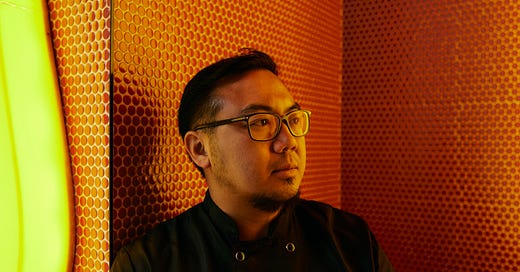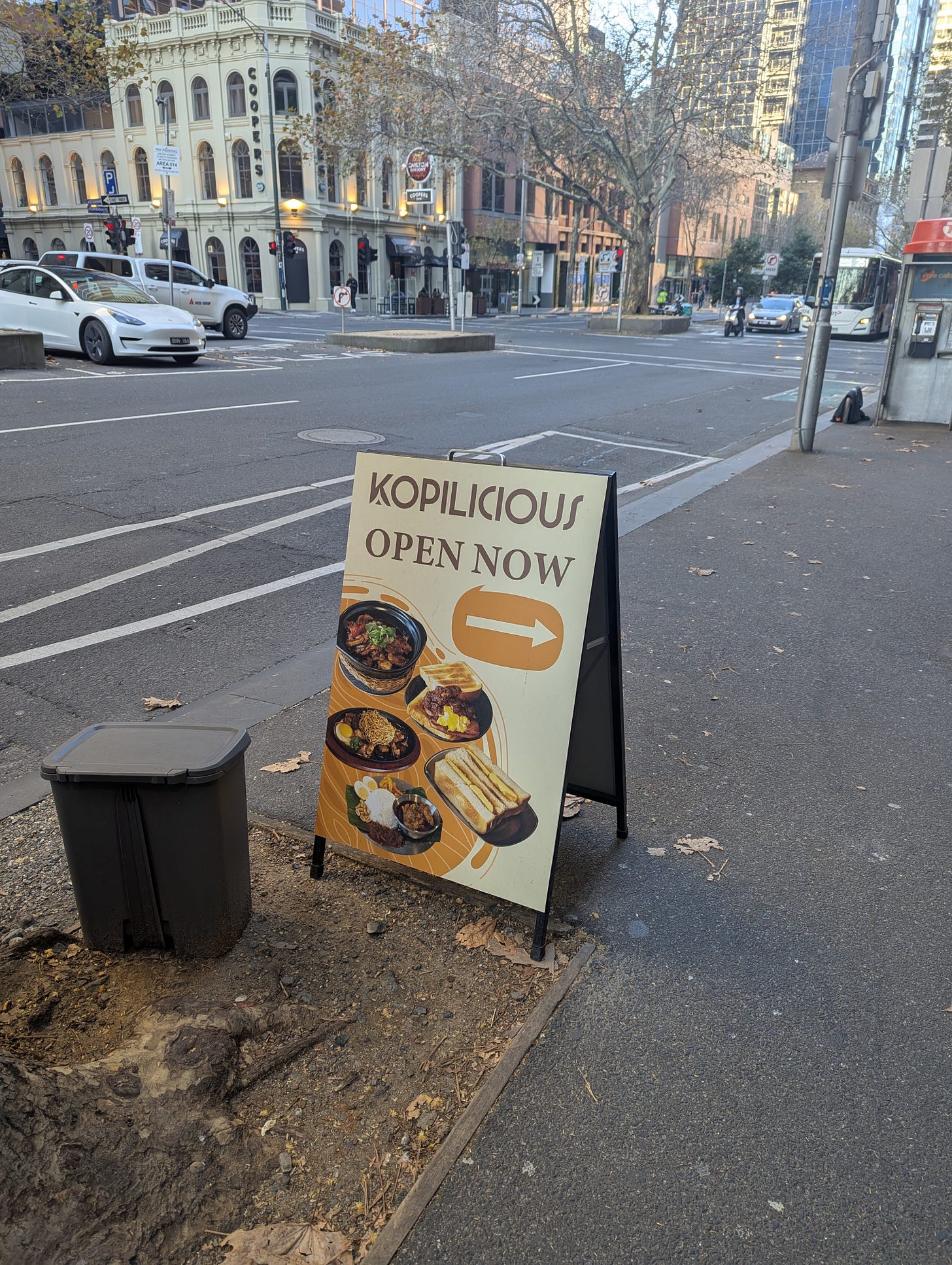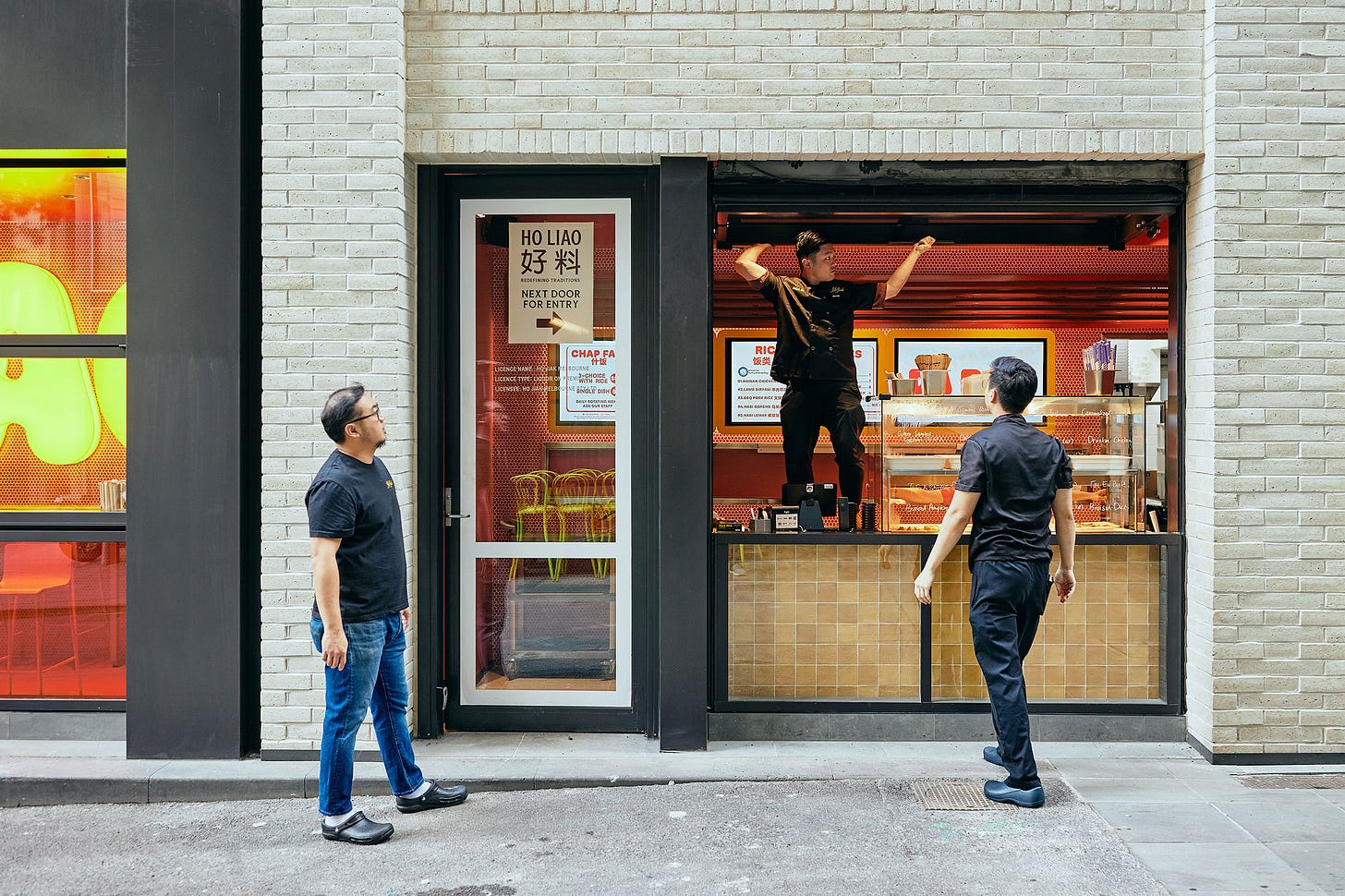Do you remember life before Lulu?
I remember.
Back then, ‘wok hei’ wasn’t a buzzword for TikTokers; it was a desperate, often unanswered prayer.
A Malaysian place was a place that had to be everything to everyone. Think of the old guards: Ayam Chef, Sarawak Kitchen, Laksa House and the various Chef Lagendas scattered like culinary outposts. Bless them.
I had Malaymas and M Yong Tofu, and a sharp, unpleasant taste in my mouth of paying $12.90 for Pappa Rich’s Char Kuey Teow in 2010.
Then Lulu landed.
A single-minded testament to pork lard, duck egg, and hot wok with ventilation.
It was a line in the sand.
Suddenly, (most) Australians can pronounce Char Kuey Teow.
Oh, you find it too greasy? That’s the tell. You’ve done the time. You’ve dragged your parents, in a queue, clutching their statins inside their puffy Kathmandu pockets, to pay respect and confirm it was ‘ok lah, but not as good as Malaysia’.
The rule of thumb seems to be that if Lulu’s is too much for you, you’ll like Kakilang. The gossip (let’s face it, that’s the best part) is that Lulu’s and Kakilang are family. Nothing says “we're not speaking” in a Chinese-Malaysian family like opening a restaurant with a nearly identical menu just down the road. “I hate your guts,” it says, “but dayum, your system is fire.”
Do you remember life before Mamak? It’s still there, a ghost ship in a bustling harbour, three-quarters empty most nights. They plate a rojak like a statue and whip a teh tarik with two inches of magnificent foam.
For the real, chaotic, poor acoustic Mamak stall feel, you go to Roti Bar.
Remember that ‘Best Job in the World’ thing by Queensland tourism board? Roti Bar had their moment in the sun with a $55k roti chef job ad, which the Malaysian internet decided was actually ‘RM150k TO FLIP BREAD IN AUSTRALIA’. It fueled a thousand migrant dreams, legal and otherwise. Their banana leaf is legendary, but it's a weekend luxury for the childless. We’re eating cold sushi rolls in the car between cello lessons and footy practice.
Some places came and went, like Go Noodles. But for a proper pan mee—that soul-affirming anchovy broth—you can still find sanctuary at Jojo’s Little Kitchen on a miserable, rainy Melbourne day.
Hor’s Kitchen, an alumnus of Lim Kopi, occupies that funky, pungent flavour of achar and petai, as distinctive as the north side of Malaysia.
Gai Wong is another champion of the single-minded dish. I’m not a Hainanese ‘white’ chicken man, myself—I need the skin to have seen some char— but I can’t argue with the rice. My perfect plate is the roast chicken from Hainan Chicken in Glen Waverley paired with the rice from Gai Wong.
COVID spawned many heroes. CC Wok and Myth Cafe were the Wanda and Quicksilver of lockdown, home-kitchen dreams that now feed the city’s west and north. Jess Ho once asked if I was Team Myth or Team CC. When it comes to asam laksa, and if you can dodge the queue, I’m with Myth. Their homely, Kelantan-style Khao Jam is slowly winning me over, too. Still, CC Wok fires up a non-Lulu-style CKT on weekends, and they have more chairs.
Five minutes from my door is Nasi Lemak House. I’ve lost count of how many times that business has changed hands, but the kerabu sambal always has a kick that makes my ears throb.
For the serious rice dishes, though, you head to Nasi Kandar Penang in Brunswick (or Springvale). Two meats and a vegetable, drowning in curry for under twenty bucks. Their mee goreng, with those slightly funky fermented tofu puffs, is true Mamak style. And a (hopefully) fresh roti with dal and egg Roti Banjir for breakfast under $10? Easily the brunch dish of the year.
Warung Mummy, famed for its blue Nasi Kerabu (also from Springvale), has taken over the old Tambuk Ciek spot on Lygon Street. A crew of Malay aunties, serving up mee rebus and eight kinds of nasi goreng.
Just as I was typing this, PappaRich in QV finally exorcised the ghost of Rosmah and has been replaced by Eat Alley. The marketing spin is that they’ve assembled an Avengers-style lineup of the best hawker stalls from Malaysia. Once you get past the branding, it’s a smaller PappaRich menu. For $25 a plate, I’d rather walk across the street to Nanyang in Chinatown and get a Nasi Lemak for $10.
Yes, you heard me. Nanyang is now in Chinatown, Preston, Hawthorn, Glen Waverley, and probably a few other places by the time you read this. Their Sarawak Laksa, Chicken Rice, Nasi Lemak, and Kolo Mee are all $10. If the dish needs to kiss the wok, like CKT or fried rice, you pay market price. My official review is this: “It’s $10, just STFU, eat and be happy”.
And I haven’t even touched on Pappa Laksa in Burwood, Terry’s Kitchen in Wantirna, or Danny’s Kopitiam in Glen Waverly, which nabbed a Critic’s Pick from The Good Food Guide. I’ve driven all the way out to Heidelberg for Jade Kingdom’s Hokkien Mee because it had more soul than anything in a food court.
My point is, Junda, how is starting a Malaysian restaurant in Melbourne under this climate, a good idea?
Broadsheet gave me a brief to shoot Da Bao, and I had this whole inner monologue in my head.
I did not expect Junda to be there in person.
He asked about my thoughts.
My thoughts?
“This is great,” my mouth replied.
Another disclaimer.
I’m not a journalist, and this newsletter is not a ‘publication’ to be taken seriously.
The typos are always a feature, not a bug.
So please, Junda, don’t sue me as I recount our encounter.
I may have remembered things differently.
You now what, let me set up a pay wall just in case.
“In Sydney, maybe 10% of my diners are Malaysians. Melbourne, I’d say 80% is Malaysians.”
Suddenly, everything made sense.
Keep reading with a 7-day free trial
Subscribe to Soy Sauce, Sugar, Mirin to keep reading this post and get 7 days of free access to the full post archives.





